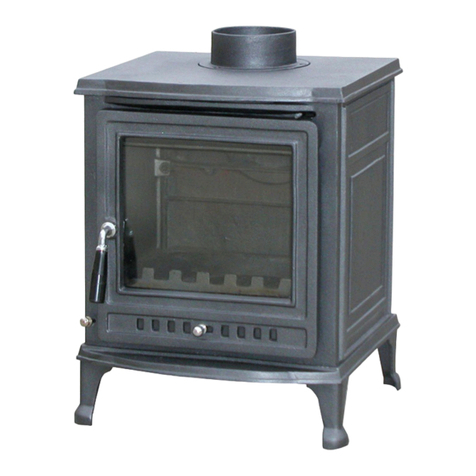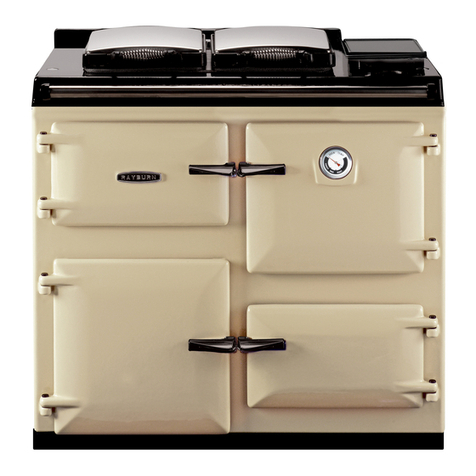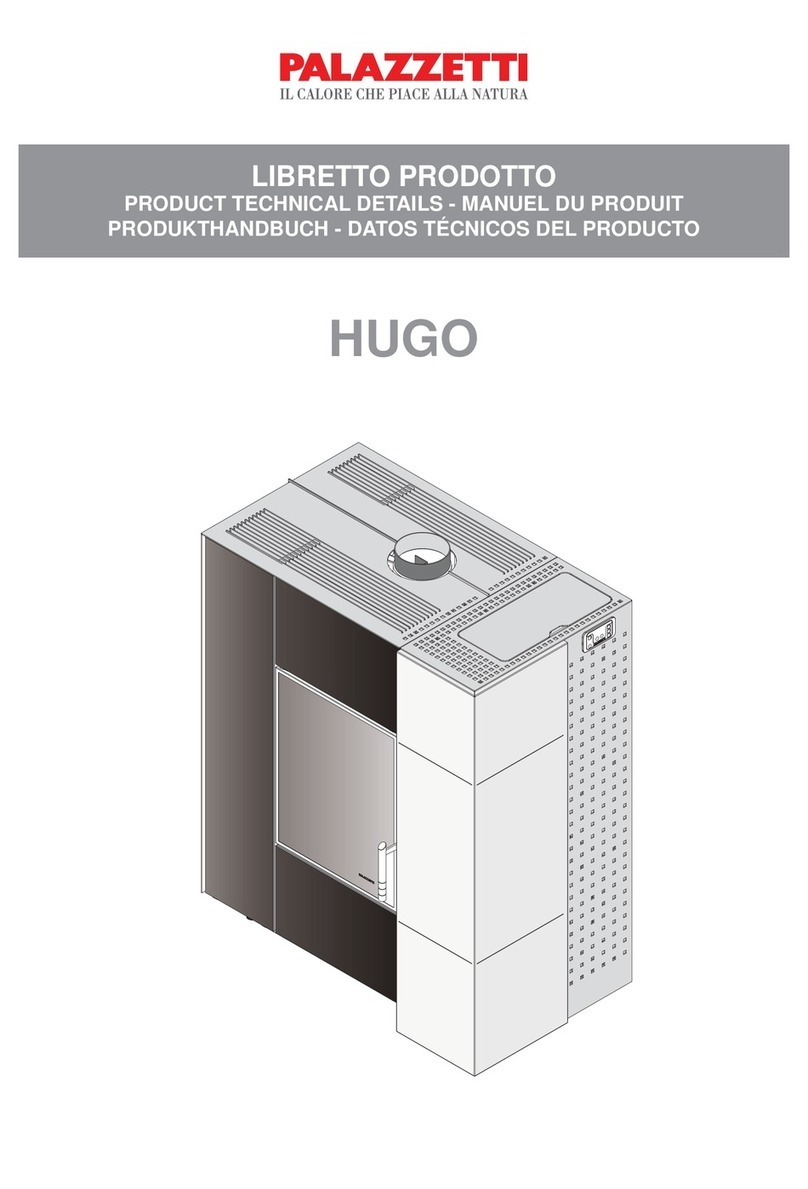Evergreen Stoves ST0406G/Y User manual

CAST IRON STOVES
4BINSTALLATION AND OPERATING INSTRUCTIONS

2
0BUGENERAL
When installing, operating and maintaining your stove respect basic standards of fire safely.
Read these instructions carefully before commencing the installation. We are not responsible
for any fault arising through incorrect installations. Save these instructions for future
reference.
All local regulations, including those referring to national and European
Standards need to be complied with when installing the appliance.
UPRE-INSTALLATION ASSEMBLY
1. After removing the stove from the packaging, open the fire door and remove all contents
from inside.
2. Lay stove onto back on pallet.
3. Fit legs with set screws and washers supplied. Care should be taken to level the stove
using the adjusting screws in the feet.
4. Remove the stove from the pallet and position it in the final installation position (See
Location and clearance to Combustibles Section).
Warning! When assembling the appliance, care should be taken to avoid the possibility of
personal injury.
Any unauthorized modification of the appliance is prohibited.
3BUCHIMNEY
The chimney must be fitted in accordance with current Building Regulations.
5BUFLUE DRAUGHT
When the stove is in the initial period, it can be adversely affected by down draught caused
by nearby hills, adjacent tall buildings or trees. Therefore not allowing flue gases to be
completely drawn off. To overcome this, open the slide regulator of primary air to allow
more air into stove, so the available fuel burns down faster, and the chimney draught is
increased. Never allow a build up of ash in the ashpan, as this will cause the grate to burn
out prematurely.
1BUCHIMNEY CONNECTION
The stove is ready for installation and it has to be connected to an existing chimney with a
flue pipe. This flue pipe has to be short, straight and as horizontal as possible when
connected on rear outlet (maximum protrusion from rear is 150mm). If a top flue
connection is required, a minimum of 500mm is recommended when connecting to a
register plate or flue liner. It is essential that all connections are sealed and made airtight.
Both the chimney and flue pipe must be accessible for cleaning and if ANY parts of the
chimney can’t be reached through the stove (with baffle plate removed), a cleaning access
door in the flue pipe or chimney must be fitted in a suitable position to enable this to be
done.

3
2BUAIR SUPPLY
When you install the stove, you must observe the relevant statutory regulations. It is
essential for the appliance to have a sufficient air supply for combustion and ventilation. A
permanently open air vent to an exterior wall within the room is required (formula to work
out air vent can be found in Building Control Document J)
UFLOOR PROTECTION
The appliance shall be installed on floors with an adequate load-bearing capacity. If an
existing construction doesn’t meet this prerequisite, suitable measures (e.g. load distributing
plate) shall be taken to achieve it.
It is recommended that this appliance is installed on a solid, level, non combustible hearth
conforming to current Building Regulations.
USAFETY ADVICE
Warning! When the appliance is operating, parts of the appliance-- especially the external
surfaces (e.g. fire door, glass, flue pipe and front wall) will be very hot to touch while in
operation. Care should be taken, e.g. protective glove should be used in operation.
This appliance is hot while in operation and retains its heat for a long period of time after
use. Children, elderly or infirm persons should be supervised at all times and should not be
allowed to touch the hot working surface while in use or until the appliance has thoroughly
cooled.
URECOMMENDED FUELS
This appliance has been tested with seasoned wood logs and brown coal. It only allows the
use of wood with a length of 30 cm and a diameter of 10 cm maximum.
We recommend you only use air dried wood as fuels. Air dried wood with max. 20% water
can be reached by a drying time of at least one-year (softwood) and /or two –years
(hardwood). Otherwise, wet or unseasoned wood will cause tar deposits in the stove and
unsatisfactory heat output will occur.
The burning of waste and especially synthetic material is not allowed. In addition, it may
cause health damage, and cause damage to the fire box. It will also create unpleasant smells,
and make neighbourhood complaints.
Good quality hard wood will burn overnight under suitable conditions.
Note brown coal and smokeless fuel should also be stored dry and ventilated.
7BUHEATING UP
On initial firing an unavoidable acrid smell will occur. This is the paint curing, and this will
go after the initial firing. During the heating up, the room in which the stove is installed
should be well ventilated. As soon as the kindling material is burned well, further fuel may
put on.
UFUELS TO AVOID
Never use alcohol, gasoline or other combustible liquid to start or freshen up a fire in this
heater.

4
ULIGHTING
1) Before lighting the stove, Please ensure that any build-up in the firebox has been
removed and that the ashpan has been emptied.
2) Open the only regulator and grate of the stove.
3) Lay firelighters or paper on the grate and then kindling wood with a small quantity of
fuel.
4) Ignite and close the door.
5) When the fire is well established, Subsequently , the grate is closed partially and the
burning of the stove will be driven over the secondary air.
Do not leave the stove unattended during this phase.
URE-FUELLING
Do not let the fire diminish too far before refueling. First, riddle the grate. Then open the
primary air supply, open the door and gradually add fuel (taking care not to fill above the
front fire bar) until a bright fire is achieved. When the door is closed adjust the primary air
(spin wheels) accordingly.
(The fire in the burning chamber remain glowing carbon without any flame. Opening the
door, and add fuel to fire, taking care not to overfill higher than the front firebars. Close the
fire door and re-set spin wheel to required setting. )
UClEANING AND EXAMINATION
The stove, the flue gas ways and the flue pipe should be examined and cleaned every year,
especially when burning wood and coal. This must be done by a competent chimney sweep.
This expert will give you some information about the necessary intervals.
The stove should be checked by an expert every year.
UPRESCRIPTION
1) Stove without self-closing door must unconditionally operate with closed burning
chamber, except when igniting, add fuel and remove the ash. Otherwise it can cause the
danger of other, e.g. at the chimney connected, fire sites and a slowing down of flue gases.
2) Stove without self-closing door with glass, has to be connected to a separate chimney.
You can only use an open burning chamber under supervision. The chimney calculation is
proved by DIN 4705.
UCOMBUSTION AIR
Because stoves depend on fire places, that take their combustion air out of the room where
they are installed, you have to provide for sufficient combustion air.
When all windows and doors are sealed (for example in connection with energy savings
measures) , it is possible that the fresh air supply is no longer guaranteed, which means that
the draught requirement of the stove can be impaired. It is a legal and safety requirement
that a permanently open vent to an outside is installed in the room to provide a fresh air feed.
This is also a preventative against carbon monoxide poisoning and required for all solid fuel
and gas appliances.
Extractor hoods, which are installed together with fire places in the same room or with room

5
air association, can impair the function of the stove.(up to the emission of smoke in the
living spaces, in spite of closed stove doors) And therefore must not be sited in the same
room as the stove.
ULOCATION
There are several conditions to be considered in selecting a location for your stove.
A. Position in the area to be heated – central locations are usually best. If situated in an
alcove, site as far forward as possible, to provide more heat to the room.
B. Allowances for proper clearances to combustibles.
6BUCLEARANCE TO COMBUSTIBLES
It is very important not to site the stove next to combustibles.
Evergreen stoves kindly remind you as follows:
1) It is recommended that this stove is sited next to and on a non-combustible surface.
2) If it is necessary to site the stove next to combustible materials, then it must install the
heat shield on the bottom plate and on the backside plate of the stove. Also a minimum
clearance from rear to combustibles 20cm; It must maintain at least 2 cm clearance
between the stove and heat shield which will allow air circulation and not impede the
performance of the stove.
3) The minimum distance of combustible materials which are indicated on the data plate,
may not be exceeded.
4) The heat shield will be optional parts for the consumer to choose which depends on own
house construction .
If the consumer needs a heat shield , please contact your supplier.
5) It is safe for the clearance of glass surface to be kept to a minimum of 80 cm between
inflammable materials. This clearance can be reduced to 40 cm if there is set up a screen
sheet of metal well ventilated on both sides between fire place and inflammable materials.
In order to protect the openings of fire place for solid fuels, floors should be built of
non-combustible materials with a non-combustible coating. The coating must be extended
on at least 50 cm forward and at least 30 cm sideward of the opening of the fire place.
UPARTS
Only those parts may be used, which are specifically allowed by the manufacturer.
The fire place may not be changed! Unless with professional advice.
UREFERENCE TO CHIMNEY FIRE
When using incorrect or damp fuel, or a lack of chimney maintainance, it can lead to a
chimney fire , because of tar deposits in the chimney. Close immediately all air openings at
the stove and inform the fire department. After the burning out of the chimney, let an expert
review the damage.

6
UNOMINAL HEATING CAPACITY
The nominal heating capacity of the stove amounts to 6.0 kW. It will be reached at a
chimney draught of 10 Pa – to 12Pa.
UROOM- HEATING CAPACITY
The room-heating capacity is corresponding to DIN 18 893 for room, whose thermal
insulation does not correspond to the requests of the warmth protection ordinance for a
nominal heating capacity of 6.0 kW.
In favourable heating conditions - 165mP
3
In less favourable heating conditions - 95mP
3
In unfavourable heating conditions - 65mP
3
For time-heating, with an interruption of more than 8 hours, the room-heating capacity is
around 25% less.
UTECHNICAL DATAU(ST-0406G/Y)
Nominal heat output : 6,8 kW
Theoretical heat output : 8,8 kW
Efficiency : 78,4 %
Weight : 82 KGS
Dimensions : H545 x W435 x D510mm
The flue collar suit to the size of flue pipe: Dia.5〞
Distance from ground to the back of flue collar : 425 mm
Connection to the chimney of the appliance : From the top or rear
UTROUBLE CLEARING
No Fire can be burnt
Please check the following measures:
A proper fuel is being used.
The air inlet is unobstructed.
Chimneys and flueways are clear
Sufficient air supply is into the room.
No extractor fan is working in the same room as the stove.
Fire blazing out of control
Please Check:
A suitable fuel is being used.
The doors are tightly closed.
The air controls are all in the closed position.
The primary air control flap is not wedged in the open position.
The glass retaining clips are not loose.
The door rope seals are in good condition
ErP Label
Pls remove the ErP label Before burning your stove.
Table of contents
Other Evergreen Stoves Stove manuals
Popular Stove manuals by other brands
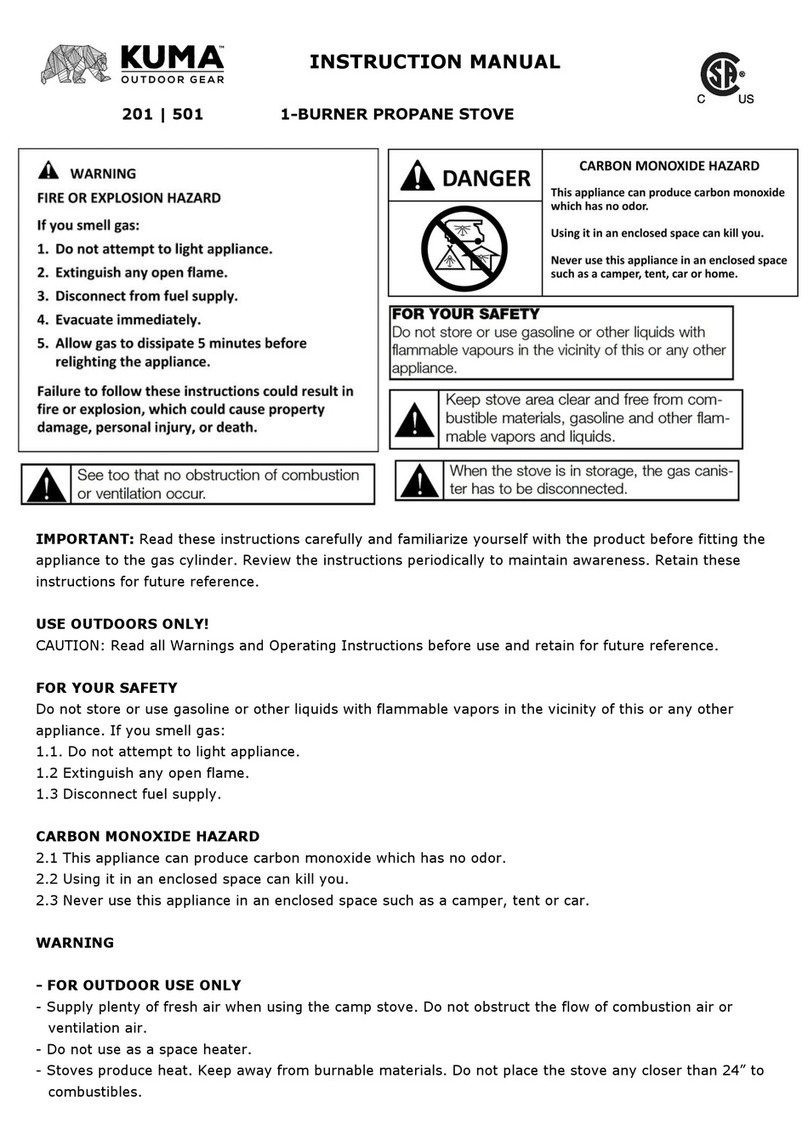
KUMA
KUMA 201 instruction manual
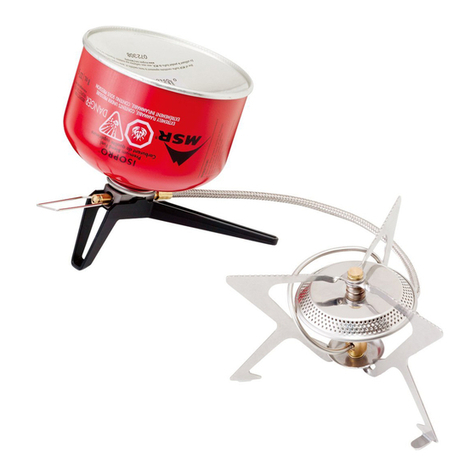
MSR
MSR WINDPRO instruction manual
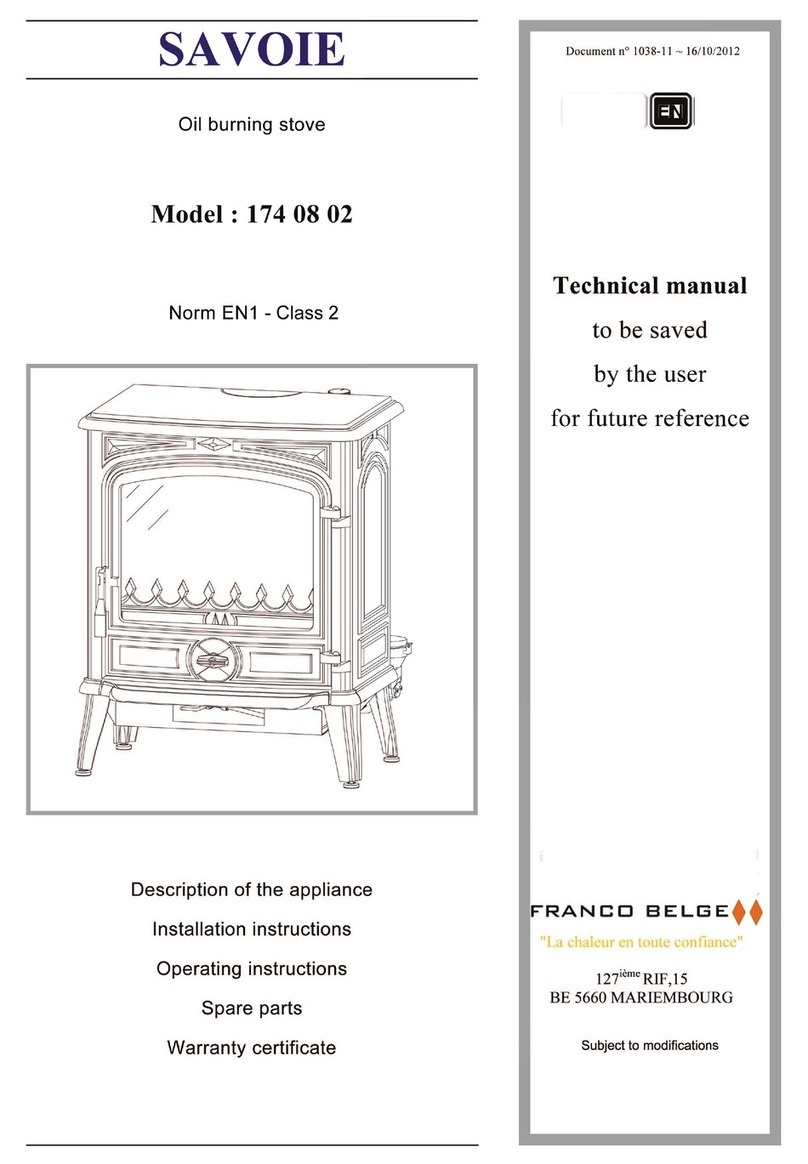
Savoie
Savoie FRANCO BELGE 174 08 02 Technical manual
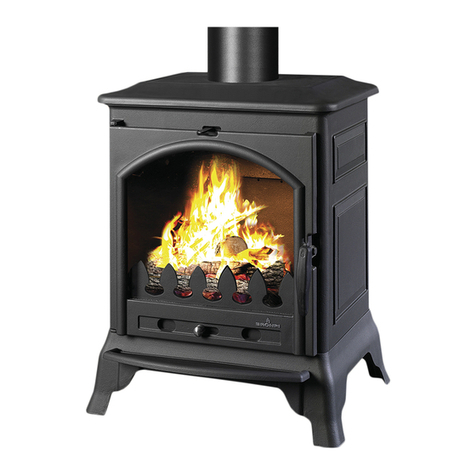
Bronpi
Bronpi Ordesa instruction manual

England's Stove Works
England's Stove Works 25-CBPAH Installation & operation manual
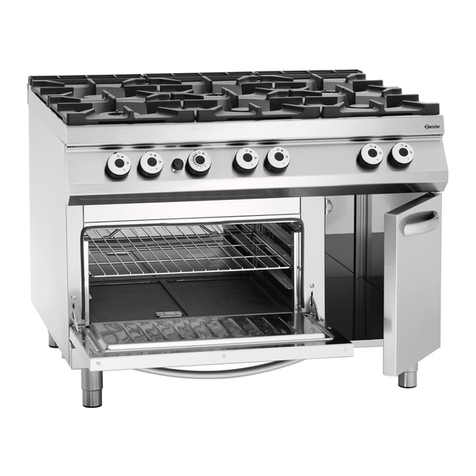
Bartscher
Bartscher FA092M00 Installation, operation & maintenance instructions
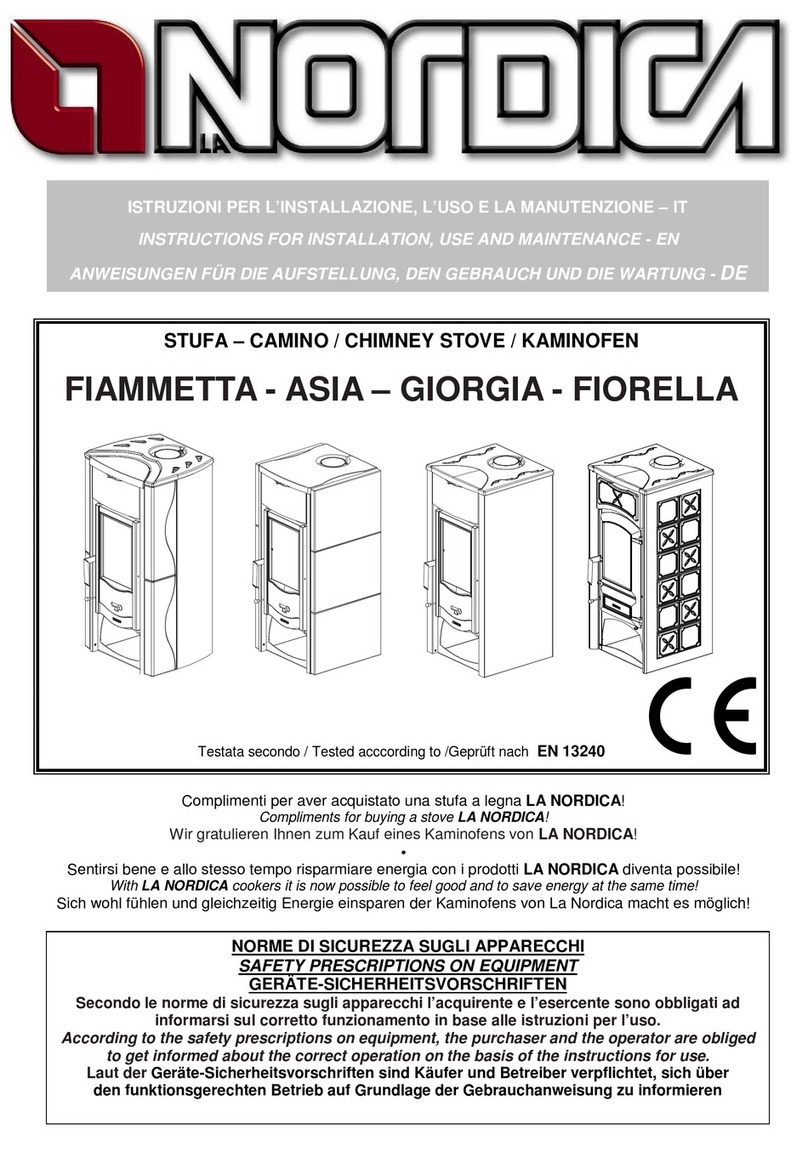
LA NORDICA
LA NORDICA FIAMMETTA Instructions for installation, use and maintenance

Breckwell
Breckwell Maverick SP22i Instruction and operation manual
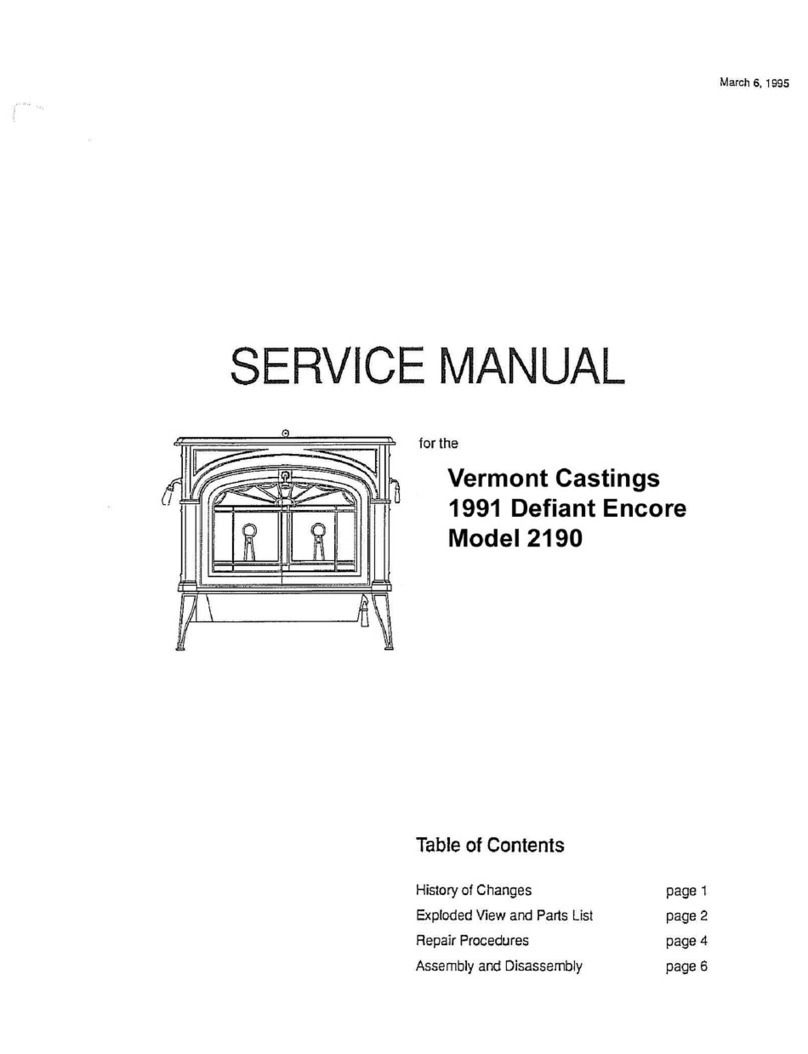
Vermont Castings
Vermont Castings 1991 Defiant Encore 2190 Service manual
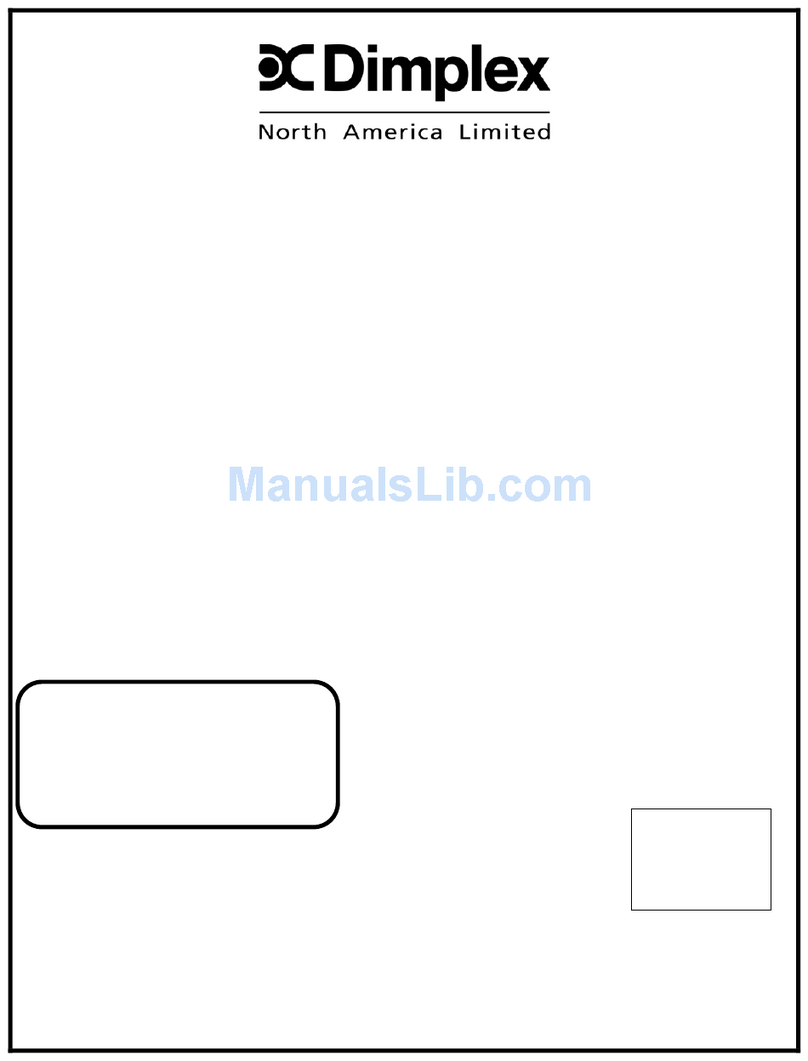
Dimplex
Dimplex ELECTRIC PATIO STOVE Practical user's guide
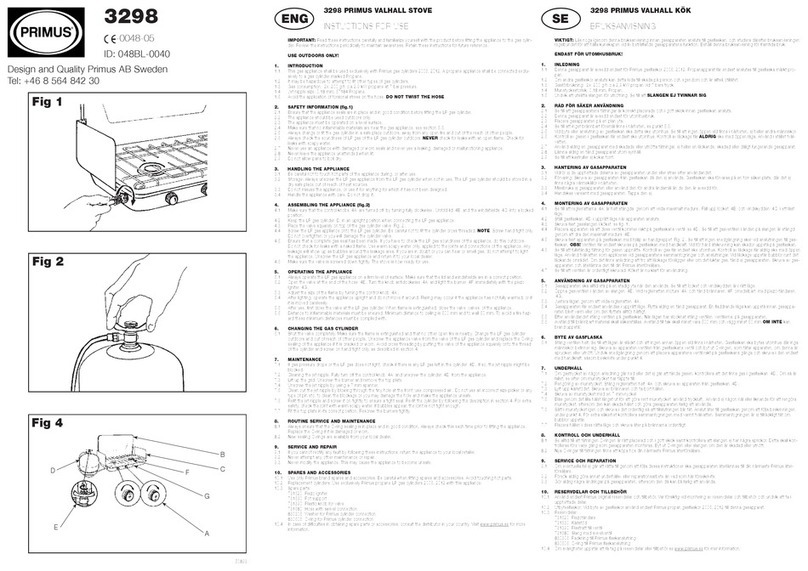
Primus
Primus 3298 Instuctions for use

Coleman
Coleman Exponent Gemini 9780 Series Instructions for use
